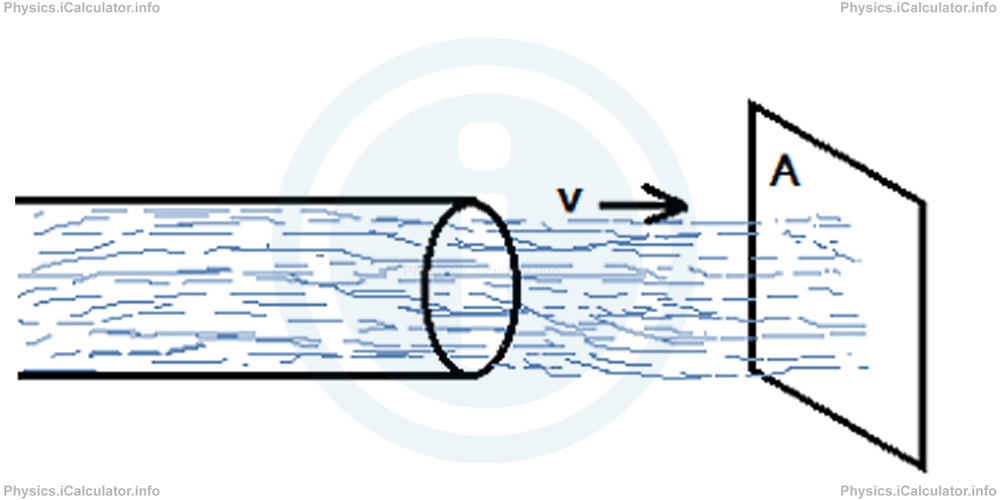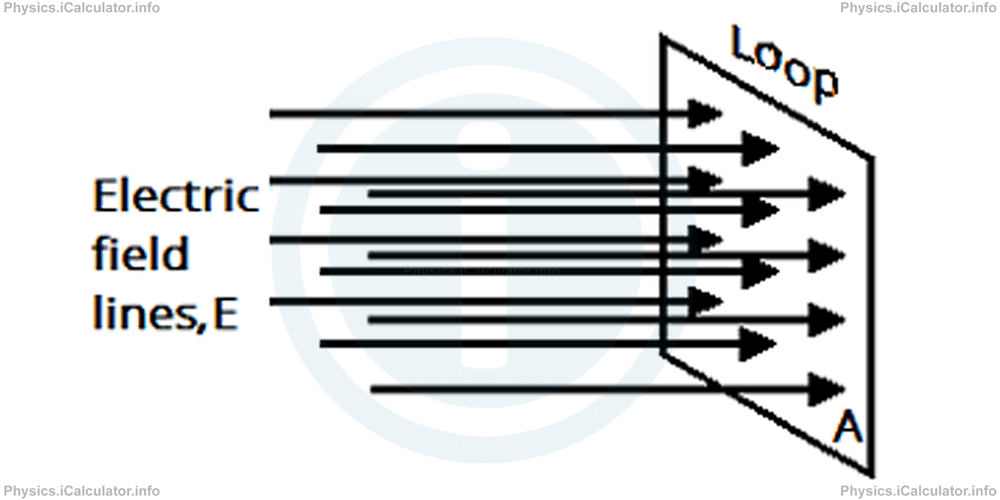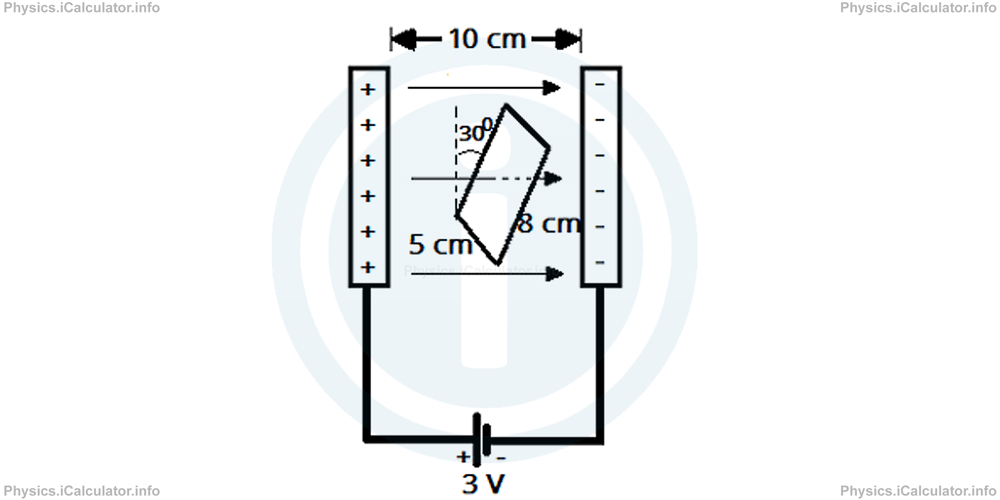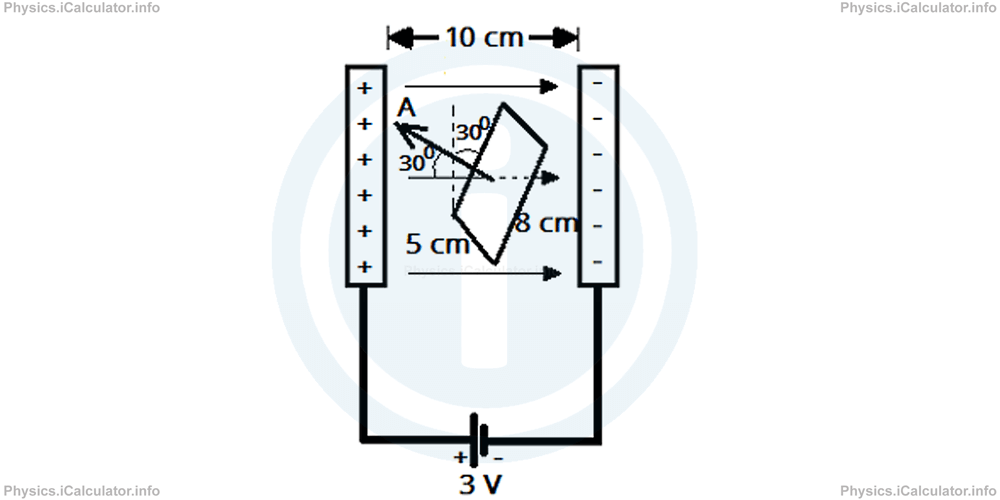Menu
Physics Lesson 14.6.2 - What is Electric Flux?
Please provide a rating, it takes seconds and helps us to keep this resource free for all to use
Welcome to our Physics lesson on What is Electric Flux?, this is the second lesson of our suite of physics lessons covering the topic of Electric Flux. Gauss Law, you can find links to the other lessons within this tutorial and access additional physics learning resources below this lesson.
What is Electric Flux?
It is convenient to explain the meaning of electric flux using the analogy with the flux of water flowing through a pipe.
Suppose a square-shaped loop placed at right angle to the flowing direction of water stream. Let A be the area of loop and v the flowing velocity of water.

The rate of water flow through the loop (otherwise known as the water flux) is denoted by Φ and is calculated by
Since area is measured in [m2] and velocity in [m/s], the unit of water flux is [m3/s]. From the last unit, we can conclude that water flux represents the volume of water flowing through a loop in unit time (in every second). In simpler words, we can consider the water flux as the amount of water flowing through the loop in unit time.
For simplicity (and for a better understanding), the water stream in the above figure is represented through horizontal lines. Obviously, if water flow would be more intense, we had to write more lines in the figure.
This pattern is similar to when we represent the electric field using the field lines. Therefore, we can extend the concept of flux to represent the number of electric field flowing through a similar loop. In this way, we obtain the electric flux, which shows the amount (number) of electric field lines (i.e. the electric field E) flowing through a closed loop of area A. Mathematically, we have

Electric flux Φ is a scalar quantity because it is obtained through the dot product of two vectors, E and A. As stated erlier, we must consider the area vector in the calculations instead of the geometric area. In addition, we must consider during the operations the angle formed by the two vectors as well. Hence, the formula of electric flux becomes
Or
When electric field lines are perpendicular to the loop plane, the two vectors E and A are parallel, i.e. they form an angle of 0° or 180° to each other. Since cos 0° = 1 and cos 180° = -1, the electric flux takes its maximum or minimum values for these angles.
The unit of electric flux is
Example 2
Two parallel plates are connected to a 3V battery as shown in the figure.

A 5 cm × 8 cm metal loop is inserted between the plates at an angle of 30° to the vertical direction. What is the electric flux passing through the loop?
Solution 2
We must consider the vector area instead of the surface area of the loop. It forms a 30° angle to the direction of electric field lines as shown in the figure.

We calculate the electric field E using the formula
= 3V/0.1m
= 30 V/m
The area A of the loop is
= 40 cm2
= 0.004 m2
The angle between the electric field lines and area vector is wide (obtuse). However, for simplicity, we can assume its corresponding acute angle but with negative sign. Thus, giving that cos 30° = √3/2 = 0.86, we obtain for the electric flux Φ:
= -30 V/m × 0.004 m2 × 0.86
≈ - 0.1 V × m
You have reached the end of Physics lesson 14.6.2 What is Electric Flux?. There are 4 lessons in this physics tutorial covering Electric Flux. Gauss Law, you can access all the lessons from this tutorial below.
More Electric Flux. Gauss Law Lessons and Learning Resources
Whats next?
Enjoy the "What is Electric Flux?" physics lesson? People who liked the "Electric Flux. Gauss Law lesson found the following resources useful:
- Definition Feedback. Helps other - Leave a rating for this definition (see below)
- Electrostatics Physics tutorial: Electric Flux. Gauss Law. Read the Electric Flux. Gauss Law physics tutorial and build your physics knowledge of Electrostatics
- Electrostatics Revision Notes: Electric Flux. Gauss Law. Print the notes so you can revise the key points covered in the physics tutorial for Electric Flux. Gauss Law
- Electrostatics Practice Questions: Electric Flux. Gauss Law. Test and improve your knowledge of Electric Flux. Gauss Law with example questins and answers
- Check your calculations for Electrostatics questions with our excellent Electrostatics calculators which contain full equations and calculations clearly displayed line by line. See the Electrostatics Calculators by iCalculator™ below.
- Continuing learning electrostatics - read our next physics tutorial: Capacitance and Capacitors
Help others Learning Physics just like you
Please provide a rating, it takes seconds and helps us to keep this resource free for all to use
We hope you found this Physics lesson "Electric Flux. Gauss Law" useful. If you did it would be great if you could spare the time to rate this physics lesson (simply click on the number of stars that match your assessment of this physics learning aide) and/or share on social media, this helps us identify popular tutorials and calculators and expand our free learning resources to support our users around the world have free access to expand their knowledge of physics and other disciplines.